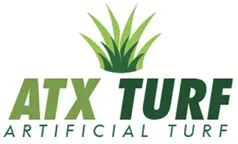Can Synthetic Turf be Patched?
Published August 1, 2022
Yes. But there are several variables to consider. As synthetic turf ages, repairs and patches are inevitable to maintain safety and aesthetics. Synthetic Turf can need repair for many reasons. From the standard high foot-traffic areas, to more acute damage caused by any number of environmental factors, the team at ATX has encountered many unanticipated situations which required turf patches or repair.
Here are just a few examples:
- – Unruly Gophers tunneling under, and up through the turf on football sidelines.
- – Stadium Lights falling and breaking on the turf from Hurricane winds.
- – Disrupted sub-bases caused by heavy rains and hurricanes.
- – Heavy Wrinkling in the turf due to flooding.
- – Snow Plows catching a turf seam and pulling up turf.
- – Separated seams due to poor installation quality or event construction.
- – Tire Marks burned into the turf fibers from Vandalism or Construction Vehicles.
- – Melted turf fibers from the sun reflecting through glass windows.
- – Roof collapsing onto turf.
- – And the list goes on….
The challenge with patching turf, is finding the right synthetic turf to match the existing turf. The color of synthetic turf can inevitably fade over time and slightly change the shade of green. If a 5 year old field in the southwest, with heavy sun, needs a patch, simply taking a remnant leftover from the initial installation will not match in color nor When you see a patch in a turfed area, it will often appear “elevated” and darker than the rest of the area because the worn turf is matted down, the fibers are now shorter due to wear and it will be lighter in color than the original turf. pile height. Simply using the original turf, or transplanting a piece from another part of the field does not necessarily mean it will match.
While appearing darker is an aesthetic problem, the patch being slightly taller is a tripping hazard and safety concern. As patches are often needed in higher-trafficked goalie areas, this can also cause irregular ball bounces directly in front of the goals, making the goalie’s job even more difficult.
In preparation for these inevitable repairs, it’s wise to take a remnant or roll of turf at the original installation, and lay it on the rooftop of a building or somewhere outside, so that it can fade over time, at the same rate as the turf in the active area. 5 years down the road, when a patch is needed, you can cut a portion from the same kind of turf which has faded at the same rate. The other option, is to find a new piece of turf, with a short pile height, in a lighter green, that will simply match the existing worn turf better. It is unlikely, however, that you will find a piece that will match exactly.
Keep in mind that turf color can vary over time, even in the manufacturing process. If you buy turf that is labelled “Emerald” green in 2022, and in 2026 attempt to buy the same “Emerald” green, dye lots in the turf and carpet manufacturing process change over time, and the “Emerald” Green from 2022 may not be the same “Emerald” Green in 2026. The idea that you can simply buy the same kind of turf, with the same color, later if need be is often not the case.
To keep your synthetic turf field, or area, consistent and safe years down the road, plan ahead and consider buying an extra roll of that same turf, that you can keep on hand in the event you need to patch your main active areas.
Contact a Rep at ATXTurf today to discuss the life expectancy of your Turf for your application. 866-428-2809


0 Comments